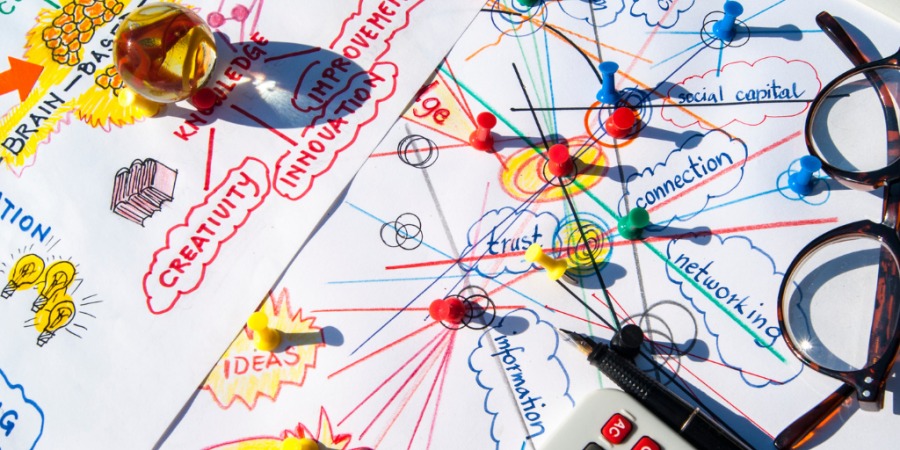
My “day job” currently involves project management.
At the start of 2022 I decided to upgrade my skills by doing a PRINCE2Agile project management course – three intensive days of bombarding my brain with both big concepts and insignificant details. I could almost feel my neurons firing – the cognitive load was significant. After eight hours in the classroom each day, we had to follow up with 40 minutes of “homework”: reading a project management scenario and answering 10 multiple choice questions. It felt like I was back in school.
To be honest, I was mentally exhausted at the end of each day and the last thing I wanted to do was homework. I easily could have skipped it (and justified this choice, magnificently), but two Think Savvy learnings bubbled to the surface of my brain, through all the project management murkiness:
So I disciplined myself to do my homework each night. First, I made sure I was rested (had dinner and a shower) so my brain could somewhat recover from the day’s huge effort. Then I did my homework questions with a timer on. No music, no noise (except from my family doing the dishes – happy days!!), so I could really get into the focus zone.
When explaining the homework, the trainer had emphasised one thing: “Make sure that when you check the answers, you also check the rationale that is provided. If you don’t understand the rationale, then go back to the text book, and if you still don’t understand the text book, ask me.”
From a brain-based learning point of view, this advice is gold. “Testing yourself” is the #1 learning strategy because it allows you to find your learning gaps so you can fix them. To get the most benefits from this strategy, you need to:
There is little point re-learning the material you get correct. The real learning is in the questions you get wrong.
“The real learning is in the
questions you get wrong.”

After completing the three day course, I needed to sit a 2.5 hour online exam. The exam could be taken at any time, but the trainer strongly recommended it should be taken within a week – and definitely no later than two weeks – otherwise we would forget much of the material.
I was torn from an educational neuroscience point of view. I understood that by completing the exam quickly, I would have forgotten less of the material. But I also know that it takes time to develop real understanding of the material.
Reflecting on the format of the exam, I realised that most of the questions related to very detailed fundamentals which I would easily forget over time. The rest of the questions related to concepts, which would be more difficult to master if I had forgotten the detailed fundamentals. I decide to go for a week and a half exam preparation time – and put my Think Savvy learnings into practice.
I had 100 practice exam questions, so I broke this down into seven study sessions of about 10-15 questions each. Each morning before work, I did one set of questions, marked them and learnt from my mistakes. I did another session most evenings. I knew that by doing lots of short sessions and spacing these out over the week and a half, I would give my brain lots of “diffuse thinking time”, and allow my brain to develop a deeper understanding.
The pass mark for the PRINCE2Agile exam is 60%. To begin with, I was getting between 50-65%. Much too close for comfort. To be honest, at this early stage not only did I not know the correct answer, but I couldn’t even understand some of the questions! Around Session 3 , my confidence was waning and I started to question this “brain-based learning stuff”. I toyed with the idea of postponing the exam, to give myself more time to prepare.
But my husband encouraged me with these words: “Trust the process. You know this way of studying is proven to work.”
So I stuck with it – testing myself each morning and night – identifying my mistakes and learning from them. Around Session 5, the questions had become easier to understand, and my marks were in the high 70%s. For Session 6, I got 100% (woo- hoo!!) and for Session 7, in the low 80%s.
“Trust the process.
You know this is proven to work.”

Sitting an exam is never easy; and I had been told the PRINCE2 exam was a killer.
By the time exam day had rolled around, I still felt under-prepared, but I also felt comfortable. I had seen my marks increase over the week and a half, and had felt my understanding develop.
That morning, I made sure I drank a lot of water and did some yoga and deep breathing. I went for a short walk to get some sunshine and oxygen through my body.
I looked over my notes to make sure the information was fresh in my brain. And I told myself several times: “Trust the process.”
The two and half hours’ exam time swished by in a blink and before I knew it “Exam time finished” came up on my screen. I waited expectantly for the computer bot to check my answers and provide my score. I breathed a sigh of relief when 84% popped up on my screen. I had done it!

This experience taught me a few things:
